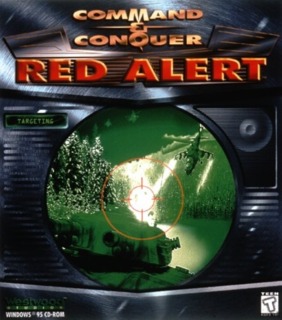Which side will you choose? Good or Evil? Just which one is good, and which evil? You can decide in Red Alert.
Red Alert explores a new history in a new timeline – one created by dark and dangerous experiments with time-travel, by an innocent man attempting to change history for the better. But in doing so, he unleashes a new enemy, one far greater in power than the enemy he eradicated from time. This new enemy is nothing less than the entire Soviet Union, under the imperialistic rule of Josef Stalin, the time is the mid twentieth century, and the people fighting against him – the Allies – although spread throughout Europe, are at first nothing more than a disorganized rebellion.
Red Alert follows a similar path to Tiberian Dawn – it allows you to play as one of 2 sides: the Soviet Union, with all its military might, or as the Allies, and their technological ingenuity. The fighting takes place around Europe and western Russia, and once again the player is not restricted in how their campaign pans out. There are up to 15 different missions for each side (again, about 15 to 20 hours gameplay), ranging from simple build-your-base-and-destroy-the-opposition, to the new kind of level you can find in this game: searching through underground bases for a specific target. There are other new additions to Red Alert that improve on features seen in Tiberian Dawn: most notably, the player is now in full control of both naval and aerial units – they can be built and commanded as part of your army. The two sides, as noted before, vary considerably in their strengths and weaknesses: as the Allies, the player will use more expensive but superior technologies, and as the Soviets, the focus will be primarily on quantity. The classic units and buildings from the original Command and Conquer make reappearances here, ranging from the simple Rifle Infantry to the GDI Mammoth Tanks (now under the Soviets) and the super-weapons for both sides.
The learning curve is once again short compared to recent games: all that is needed is an understanding of the controls, which are the mouse and possibly the number keys for teams, and the different types of unit and building. But since the units are introduced bit by bit throughout the whole game, it isn’t exactly overwhelming to the player, although it may get boring using rifle infantry for 4 or 5 missions in a row – don’t rush it: enjoy every single kill.
However, Red Alert perhaps suffers from a less rounded storyline than the original C&C – some of the later missions on both sides are much the same: build your base and destroy the enemy one. While they all add to the experience and prepare you for the final missions, the player might find their concentration wavering from time to time. But to make up for this, many of the mistakes in the first C&C have been corrected, including the AI being given a lot more intelligence (i.e. it won’t let you sandbag it into its own base this time!). This makes the battles more and more dependant on forward thinking, since the AI can turn the way of a mission with one single attack. And the campaign is all integrated – what you do in one battle will affect what you can choose from in later ones: the “world” situation is shown on the (surprisingly cheesy) map after each mission.
Players of the original Command and Conquer will immediately see that the graphics in Red Alert are identical – but this is not really surprising since the games were only a year apart. Even so, once again the graphics are not the greatest problem in the game, and very few people have a genuine problem with the way the game looks. And it’s not just the in-game graphics: one of the best aspects of the original Command and Conquer is used to great effect in Red Alert: cutscenes between the missions. These have been improved greatly from Westwood’s previous game: now many of the scenes are not just a talking head, they involve more people – including the recurring character of Tanya the Freedom Fighter on the Allies side, and Stalin himself for the Soviets. However, sometimes there is much to be desired from the acting – one memorable situation involves Stalin and his mistress – quite embarrassing, and not just for the viewers! Even so, the majority of the cutscenes are well thought out and acted, making Red Alert seem more like a full-blown war than the original C&C.
The soundtrack in Red Alert, once again created by Frank Klapecki, only adds more to the game – there is a brilliant mix of music ranging from pounding marches to energetic beats, all of which merely encourage you to kick the enemy’s ass into the ground. In particular there is one tune that stands out: “Hell March” (which was later used as the main title tune to Red Alert 2).
After the instant success of the original Command and Conquer, Westwood could have just left it at that. But they didn’t: instead they went back to the drawing board, and created a new game from the ground up, one which encompassed the best qualities of the last one, and added its own unique flare at the best times. A random map / skirmish option was added, and the multiplayer was revamped to make up for the less reliable version present in the original C&C. The result was Red Alert, and nobody at the time would have guessed that it would spawn 2 expansion packs, as well as a sequel of its own. But it did – and the rest is as they say, history
Which side will you choose? Good or Evil? Just which one is good, and which evil? You can decide in Red Alert.
The world will be yours once again, to Command and Conquer.

